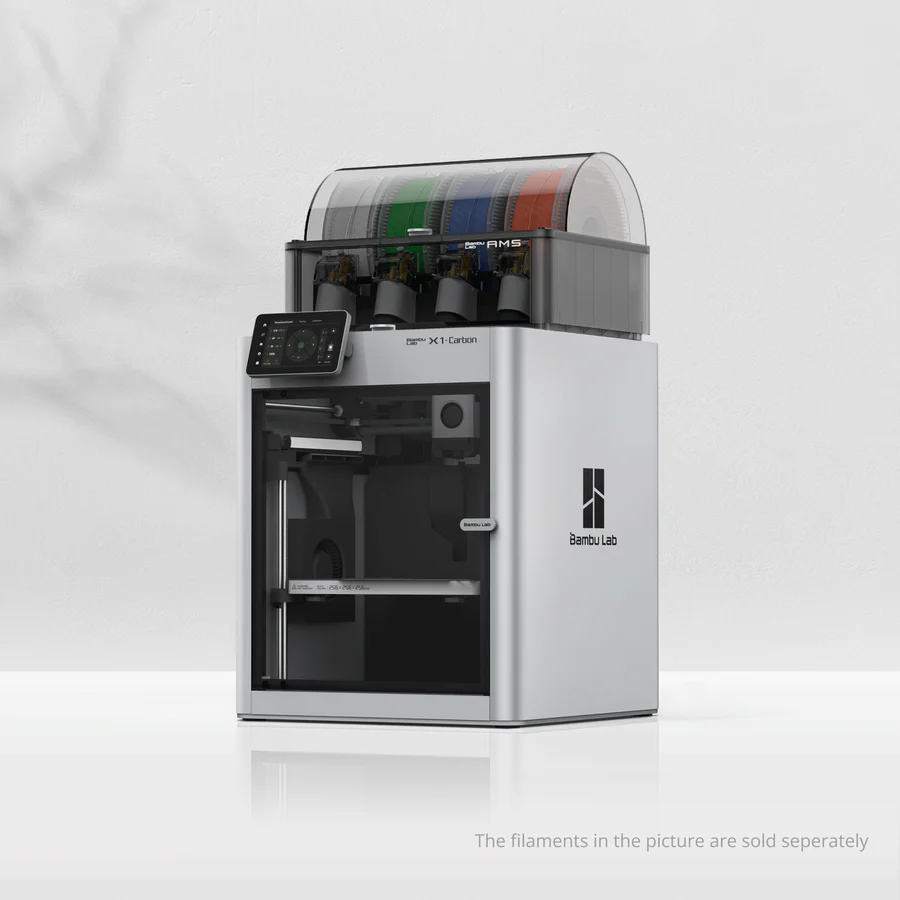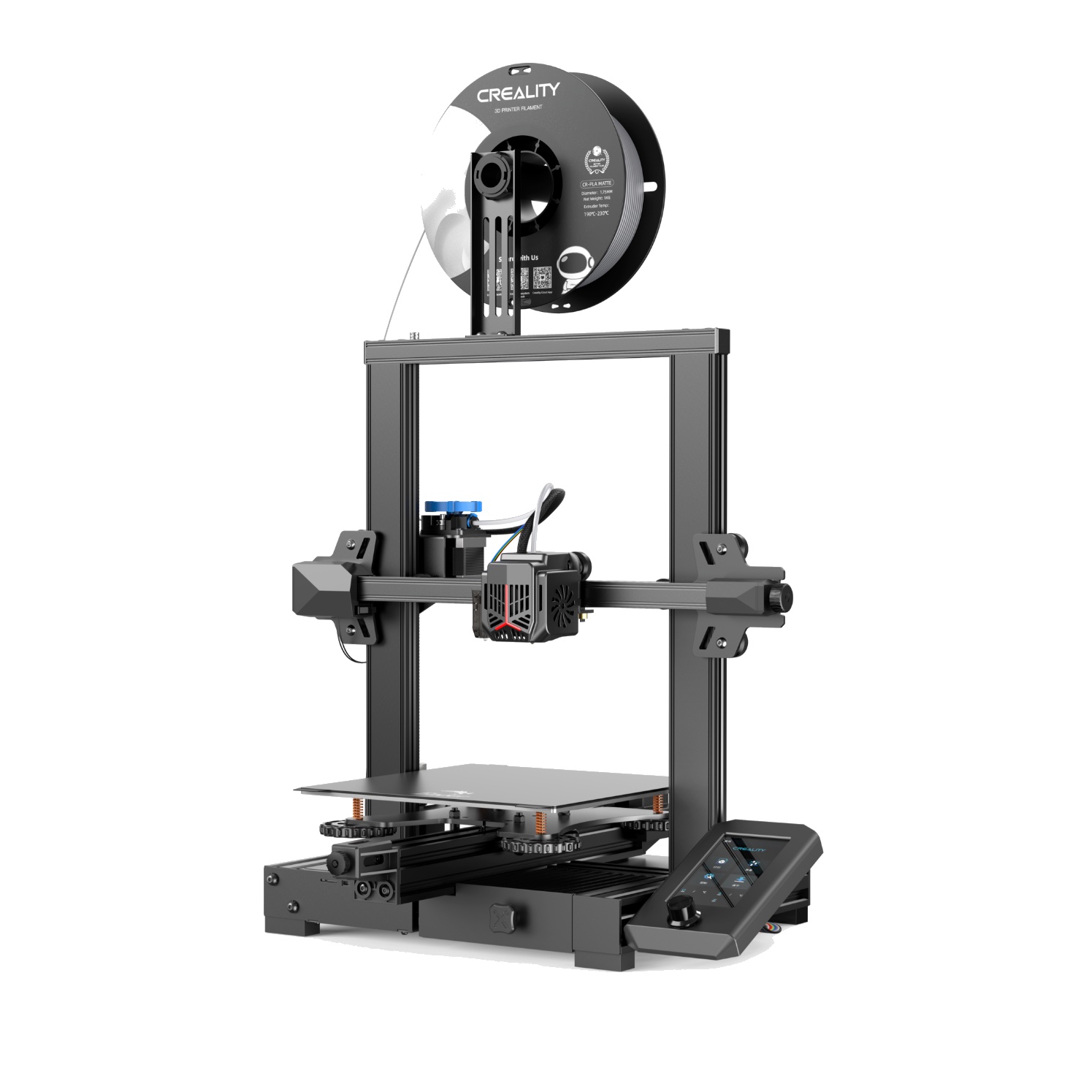Compare X1 carbon vs Ender 3 V2 Neo
Comparison between the best 3D printers
Choose the best 3D printer at the best price. The cheapest 3D printers are here.
Buy a 3D printer here with 3D Fila.
 |
 |
|
| Model | X1 carbon |
Ender 3 V2 Neo[BUY Ender 3 V2 Neo] |
| Printing Material | Filament | Filament |
| Buy Filament for Bambu Lab X1 carbon | Buy Filament forCreality 3D Ender 3 V2 Neo | |
| Estimated price | $1449,00 | $310,00 |
| Manufacturer | Bambu Lab | Creality 3D |
| Release Year | 2023 | 2022 |
| Print Volume [mm] | 256x256x256 | 220x220x250 |
| Printer Size [mm] | 389x389x457 | 438x424x472 |
| Weight [kg] | 14,13 | 9,8 |
| Power Loss Recovery | YES | YES |
| Enclosed printer | YES | NO |
| Bed Leveling | Automatic | Automatic |
| Filament End Sensor | YES | YES |
| Bed type | Heated | Heated |
| Power supply system | Direct Drive | Bowden |
| Standard nozzle | 0,4 | 0,4 |
| Maximum Nozzle Temperature [°C] | 300 | 260 |
| Maximum Bed Temperature [°C] | 120 | 100 |
| Maximum printing speed [mm/s] | 500 | 80 |
| Filament holder | YES | YES |
| Camera for supervision | YES | YES |
| Recommended filaments | PLA, PETG, TPU, PVA, PA, PA-CF, Nylon, PC | PLA, PETG |
| Recommended slicers | Bambu Studio, Super Slicer, Cura, Prusa Slicer, Orca | Cura, Simplify, Slic3r, IdeaMaker |
| Maximum Resolution [mm] | 0,1 | 0,1 |
| Processor | Quad ARM A7 1.2 GHz | 4.2.2 mainboard |
| Display | Touchscreen 5'' | Display touchscreen 4,3'' |
| Power Supply | 350 W | |
| Connectivity | Wifi, Bambu bus, Cartão SD | SD / USB |
| Operating systems | Windows, Linux, Macbook | Windows, Mac, Linux |
| Date of registration in the system | 2024-04-10 | 2022-12-09 |
| Release date | 2023 | 2022 |
| Extra features | The Bambu Lab X1 Carbon revolutionizes 3D printing with stunning design, high print speeds, and a streamlined user experience. It stands out with its CoreXY system, a hotend capable of reaching 300°C, allowing for a wide range of filaments. Its LiDAR-assisted bed leveling system, vibration compensation, and AMS multicolor printing capability raise the industry standard. Print quality is impressive, with the ability to fine-tune for perfection. The X1 Carbon, with its closed build volume, not only promises but also delivers one of the most advanced 3D printing experiences available to consumers. | The Ender 3 V2 Neo printer stands out for its automatic bed leveling with the CR Touch system, ensuring high-quality initial layers. It features an all-metal Bowden extruder for increased durability and improved filament handling. Its flexible, PC-coated magnetic build plate makes it easy to remove prints and is durable and easy to clean. It also includes a new user interface with model preview and an updated gantry design. The Ender 3 V2 Neo maintains the same build volume and temperatures as the previous version, supporting popular filaments such as PLA and ABS. It features a quiet 32-bit mainboard and additional features such as a filament sensor, print recovery, simple 3-step assembly, an integrated toolbox, and belt tensioners. |
| Support for multiple colors and materials (AMS and CFS) | YES | NO |
Notes * |
||
| Cost-benefit | 7 / 10 | 7 / 10 |
| Hardware | 6.4 / 10 | 2.8 / 10 |
| Tela | . | . |
| Print volume | 4 / 10 | 3 / 10 |
| Performance | 4 / 10 | 0 / 10 |
| [BUY Ender 3 V2 Neo] |
Conclusion |
| In comparing the Bambu Lab X1 Carbon and the Creality 3D Ender 3 V2 Neo, we find two distinct offerings that cater to different user needs and budgets. The X1 Carbon stands out as a high-end solution, equipped with advanced features such as a CoreXY system, a maximum print speed of 500 mm/s, and the capability to handle a wide variety of filaments due to its high nozzle and bed temperatures. Its enclosed design and integrated technologies like LiDAR-assisted bed leveling enhance user-friendliness and print quality, making it suitable for professional applications and advanced users who demand precision and versatility. Conversely, the Ender 3 V2 Neo serves as an excellent entry-level printer, offering core capabilities at a substantially lower price point. While it lacks some of the advanced features of the X1 Carbon, it still provides automatic bed leveling, decent print quality, and can handle popular filaments well. Its simplicity and affordability make it an attractive option for hobbyists or those new to 3D printing. Ultimately, the decision comes down to user requirements: if budget is a primary concern and the user is looking for a solid and reliable machine for basic printing, the Ender 3 V2 Neo is a commendable choice. However, for those willing to invest more for cutting-edge technology, faster speeds, and greater material versatility, the X1 Carbon is arguably the superior option. The choice between these two models reflects a balance between budget, intended use, and desired features in the realm of 3D printing. |

